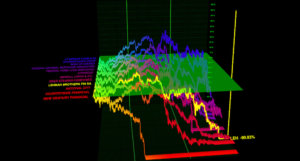This paper analyzes the link between Kamakura Risk Information Services (KRIS) data on megabank default probabilities and credit spreads.
It develops an “eye-ball” test for the extent of individual-bank “zombieness” whose grade turns on how weakly a bank’s credit spread responds to movements in KRIS default probabilities calculated over different horizons. The intuition underlying the test is that the more decapitalized a bank is allowed to become, the more creditors must be relying on someone other than stockholders to absorb the firm’s risk of default. The tests show that the recovery of European megabanks from the 2008-09 crisis has been incomplete. Creditors of Europe’s giant banks still seem to be relying on implicit guarantees. In particular, credit spreads on the bonds of these banks appear to be relatively insensitive to the level of the issuer’s longer-term probabilities of default. Coupled with the high pairwise correlation that KRIS default probabilities show between major US and European banks, this finding suggests that creditors do not expect the EU’s bail-in requirements to play much of a role in resolving megabank insolvencies during the next crisis.




